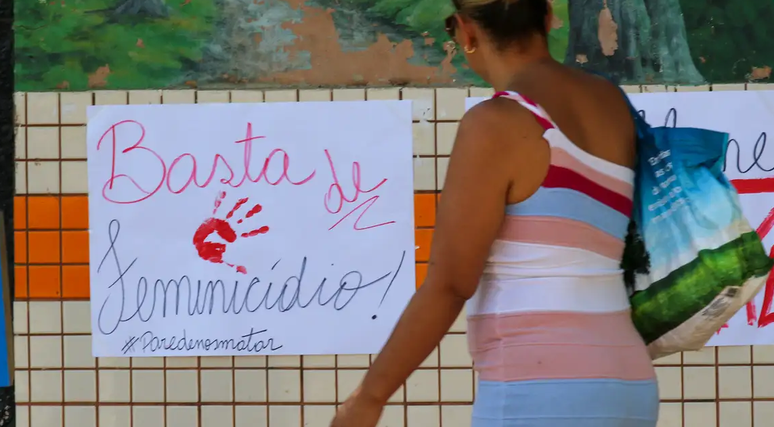A report from the Sou da Paz Institute also concluded that most cases occur at home
Summary
The report shows that 28% of gun deaths among women in Brazil are caused by intimate partners. The most affected age group is 20 to 39 years old and cases are more frequent among black and brown people. 45% of cases occur on public roads and 25% of the killers were under the influence of alcohol.
On the occasion of International Women’s Day it is necessary to highlight an alarming fact: half of the women killed in Brazil in 2022 were killed by a firearm. In most cases, the crime is committed by someone close to you. The data comes from the Sou da Paz Institute, which has mapped the role of firearms in gender violence in Brazil.
According to the survey, 28% of murderers are intimate partners. Homicides committed by friends or acquaintances represent 9% of incidents, while crimes committed by family members represent 6% of reported cases.
Gun violence is often associated with other warning signs as well. According to the report, most cases were related to physical (52%), psychological (22%) and sexual (15%) assaults. The most affected age group ranges from 20 to 39 years and represents approximately 60% of the total cases. Of these women, seven in ten are black or mixed race.
The report also analyzed events that occurred between 2012 and 2020 and concluded that, on average, 2,200 women died from firearms in Brazil each year. This equates to 6 deaths per day. The year with the highest number of cases was 2017, when 4,928 women were killed with a lethal weapon.

Despite being more educated, women earn 21% less than men
However, the murders of women with firearms have decreased. In the last year analysed, 2022, the number of victims reached 3,788, more than a thousand fewer accidents than, for example, 2017.
What increased was the number of cases of non-lethal armed violence, when a woman is injured and survives. In 2021 there were 3,304 cases. In 2022, events reached 3,793.
Inside the house
Another point to observe is the place where the crime takes place: in their homes. What was supposed to be a safe space for these women is, in fact, the scene of 27% of reported crimes. The rate, in fact, has been growing since 2012, when domestic homicides amounted to 19%.
The report also highlights that Black women are more vulnerable to gun violence outside the home. This is because 45% of homicides occurred on public streets, compared to 24% at home. Among non-Black women, the rate is less discrepant: 33% are at greater risk of dying from a firearm in public, while 34% are at home.
North and Northeast
In Brazil the majority of the population is female: 51.5% of the inhabitants are women, according to the Brazilian Institute of Geography and Statistics (IBGE). The latest census, published in 2023, still shows that women are the majority in all regions of the country.

However, some regions appear to be more dangerous for the female population. According to data from the Sou da Paz Institute, the North and the North East record the highest rates of female homicides with firearms, with mortality rates of 3 and 2.6 per 100 thousand inhabitants respectively.
Among the states with the highest number of occurrences are Ceará (4.3), Rondônia (3.9) and Bahia (3.6). The South-East has the lowest rate, 0.8, followed by the Centre-West (1.7) and the South (2).
Alcohol consumption
The research brought another important piece of information to understand the landscape of gender violence in Brazil. According to the survey, in approximately 25% of cases of non-lethal gun violence, the assailant consumed alcohol. At home, this rate rises to 35% of cases.
The Sou da Paz Institute report used data from the Mortality Information System (SIM) and the National Notifying Disease Surveillance System (Sinan) to complete the study. The period analyzed by the organization goes from 2012 to 2022, the last year with data available from the Ministry of Health.

The 10 Brazilian states where women most requested protection measures against attackers
Source: Terra
Rose James is a Gossipify movie and series reviewer known for her in-depth analysis and unique perspective on the latest releases. With a background in film studies, she provides engaging and informative reviews, and keeps readers up to date with industry trends and emerging talents.

-s1h6l7weelwk.jpg)




